This post will cover the top 7 adductor exercises you can do at home, with and without equipment.
Specifically, you’ll learn
- the best way to activate the adductors for BOTH strength and injury prevention,
- 3 simple stretches to lengthen tight adductors, and
- how you can do all of these exercises at home!
Let’s get started.
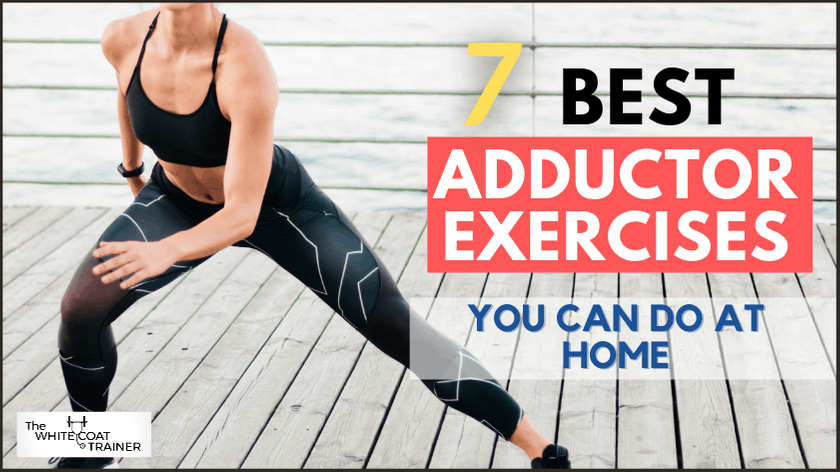
What are the adductors?
The adductors are a group of muscles located in your inner thigh that work to pull your legs together.
The adductor muscles are:
- the adductor magnus,
- the adductor longus,
- the adductor brevis,
- the adductor minimus,
- the pectineus, and
- the gracillis,
How do you activate the adductors?
The adductors are activated when you do any movement that brings your legs closer together, or closer to your midline.
This is in contrast to hip abduction, which is when you bring your leg away from your body.
These movements can be done on your back, on your side, standing, or sitting.
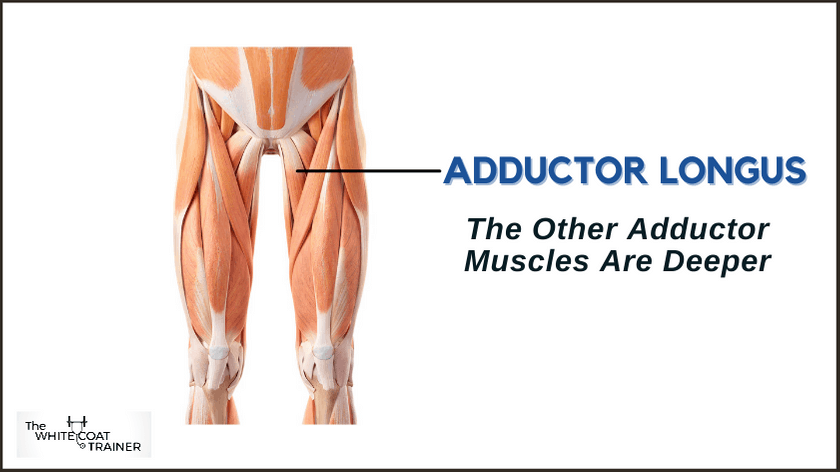
Why is adductor training important? (The benefits of strong adductors)
Adductor training is important because these muscles improve strength in the frontal plane and aid in hip extension.
Why is this important?
Strong adductors can:
- Stabilize your knee joint while walking, running, or decelerating,
- Stabilize your hip joint to improve balance and coordination (especially during single leg exercise), and
- Allow for pelvic rotation and pelvic separation (which is necessary in many different sports and athletic events)
What happens if you have weak adductors?
Weak or tight adductors can lead to groin injuries- especially if you play sports that involve sprinting or changing directions quickly.
Tight adductors can also contribute to knee pain, which is common in runners.
How do you test for weak adductors?
The best way to test for weak adductors is to see if you can perform the Copenhagn Plank.
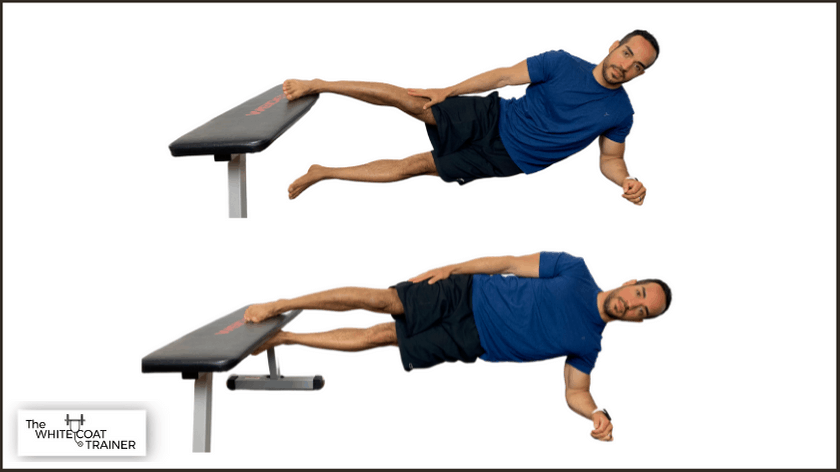
Set your feet up on a bench, with your elbow on the floor as if you were performing a side plank. From here, remove your bottom leg off the bench so that your lower body is entirely only supported by your top leg. If you cannot hold this position for a few seconds, you have weak adductors.
You should test both sides to look for any discrepancies.
How do I strengthen my adductors?
The best way to strengthen your adductors is by doing exercises that require you to move your legs inwards against resistance, or ones that lead to a stretch in the inner thigh.
The good news is, many squatting and lunging exercises will activate the adductors to a large extent.
However, if you want to isolate the adductor muscle (or you need to strengthen them due to an injury), here are the best exercises you can perform.
7 hip adductor exercises you can do at home without equipment
Here are the 7 best exercises you can do at home for hip adductor strength and groin injury prevention.
NOTE: IF ANY OF THESE EXERCISES CAUSE YOU GROIN PAIN – DO NOT DO THEM! SEEK HELP FROM A PROFESSIONAL.
- Side-Lying Hip Adduction
- Glute Bridge Squeeze
- Horse Stance Squats
- Archer Squats/Cossack Squats
- Foot Elevated Side Lunge
- Copenhagen Planks
- Standing Adductions
Let’s go over them one by one.
Side-Lying Hip Adduction
The side-lying hip adductor is probably the best way to purely isolate the adductors.
In fact, a study was done comparing several different adductor exercises. This one was the best.
Here’s what the exercise looks like.
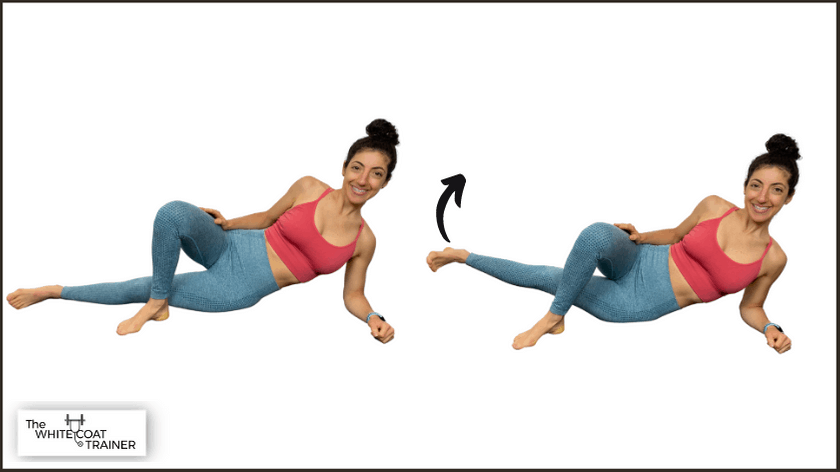
To do it:
- Lie on your side and place your bottom leg straight, and the top leg bent up over and across your bottom leg.
- Next, prop yourself up on your elbow for comfort.
- Then, lift your bottom leg straight up towards the ceiling without bending your knee.
- Hold the top position for 1 second and return to the starting position.
To make this exercise more challenging you can do two things, add weight, or do them from an elevated surface.
Weighted Side Lying Hip Adductions:
You can add ankle weights:
2-5 lbs will be more than enough.
Elevated Side Lying Hip Adductions
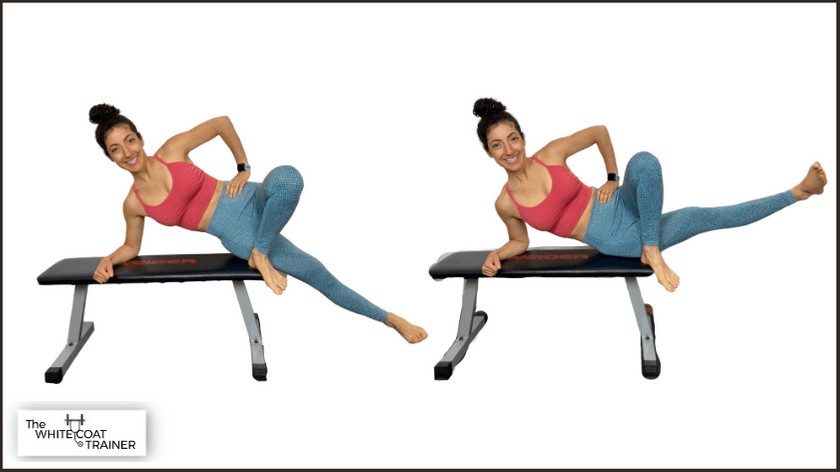
You will need a bench to do this movement.
Get into the side-lying position towards the bottom half of the bench so that your bottom leg can dangle off the bench.
Since you’re elevated- the range of motion is increased which makes it more challenging.
Glute Bridge Squeeze
The glute bridge squeeze strengthens all the muscles that maintain good pelvic and lumbar spine positioning.
In addition, it trains hip extension which also activates the adductors.
To do it, you will need to place a rigid object between your knees.
You can use a:
- foam roller,
- medicine ball,
- kickball, etc
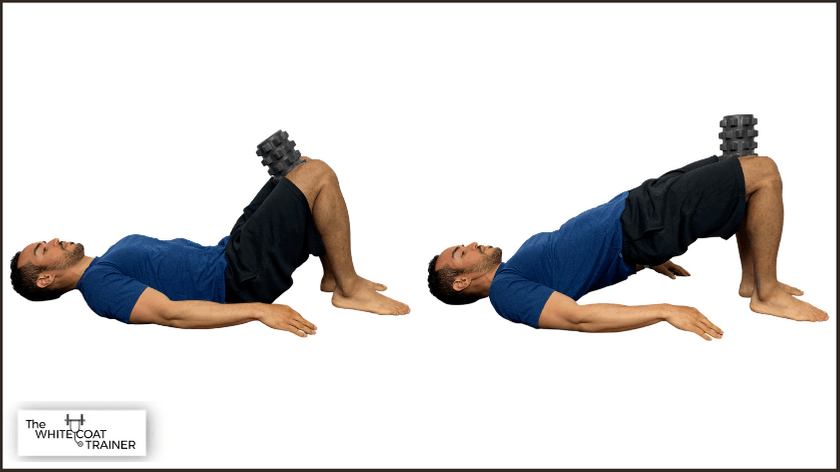
Here’s how to do it:
- Place the object between your knees as you lie on your back with your knees bent and feet flat on the floor.
- Next, engage your abs to flatten your low back against the floor.
- Then, squeeze the ball between your knees and activate your glutes to lift your hips.
- Lift your hips up towards the ceiling until they are fully extended and hold the top position for one second.
To make this exercise more challenging, you can do:
Single Leg Glute Bridge Squeeze
Simply do this exercise one leg at a time to increase the difficulty.
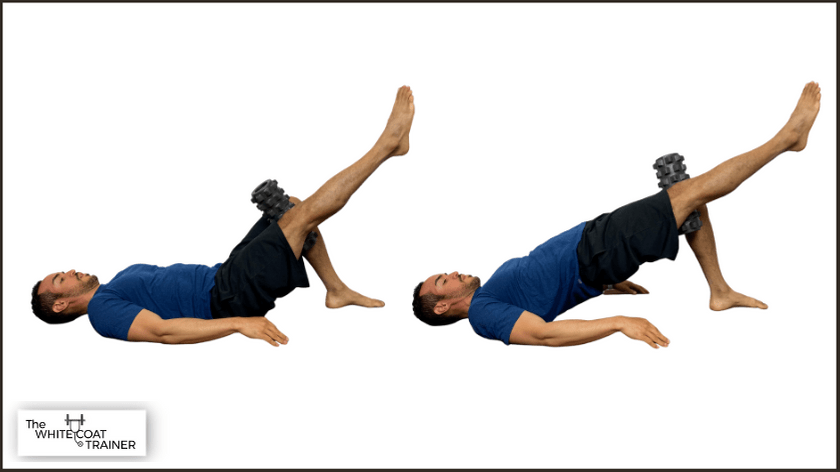
Horse Stance Squats
The horse stance squat is an excellent exercise to open your hips and train your adductors isometrically.
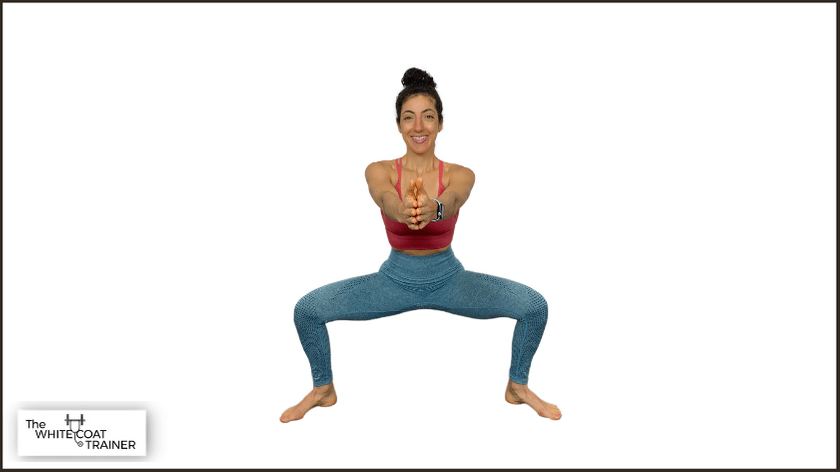
To do it:
- To begin, stand tall with your feet as wide as you can comfortably go.
- Keep your feet pointing straight ahead or slightly out.
- Slowly squat down as far as you can go without letting your knees cave inward.
- Keep your chest proud and hold the bottom position.
To make this exercise more challenging, you can do:
Weighted Horse Stance Squats With Dumbbells
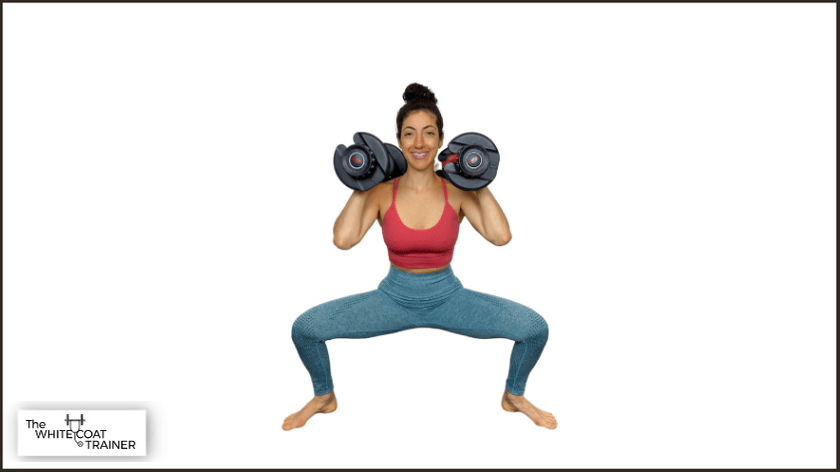
Archer Squats
Archer squats, aka cossack squats, are one of my favorite lower body calisthenics exercises.
To ensure that your adductors get the most work, try to keep the foot of the straight leg as flat on the ground as possible.
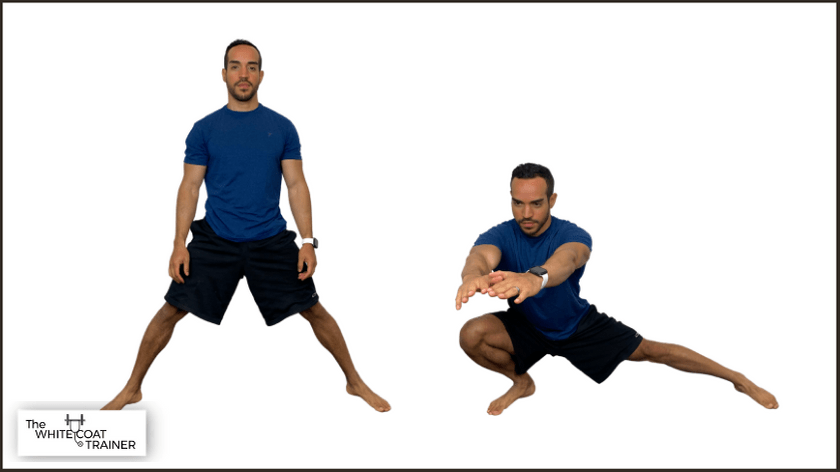
Here’s how to do it:
- Stand with feet as wide as you comfortably can.
- Keep your feet pointing straight ahead or slightly out.
- Next, squat down towards one leg while keeping the other leg straight and flat on the floor.
- As you reach the bottom, you should notice a nice stretch on the adductor of the straight leg.
- Only go as low as you comfortably can and do not let your knee collapse inward or let your spine sag.
To make this exercise more challenging, you can do:
Pistol Squat Progressions
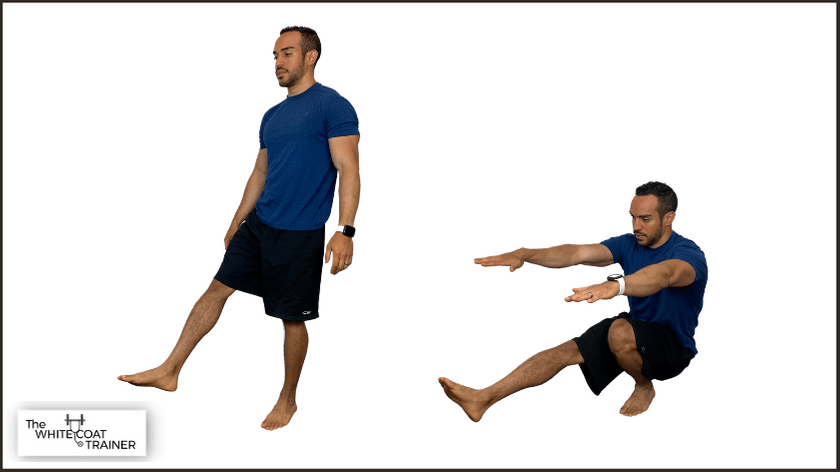
I go over all the progressions you can do in my post on 1 legged squats.
Foot Elevated Side Lunge
This is another great exercise that strengthens the adductors in a lengthened position.
You will need a bench or a stepping stool to rest one foot on top of.
Here’s what it looks like:
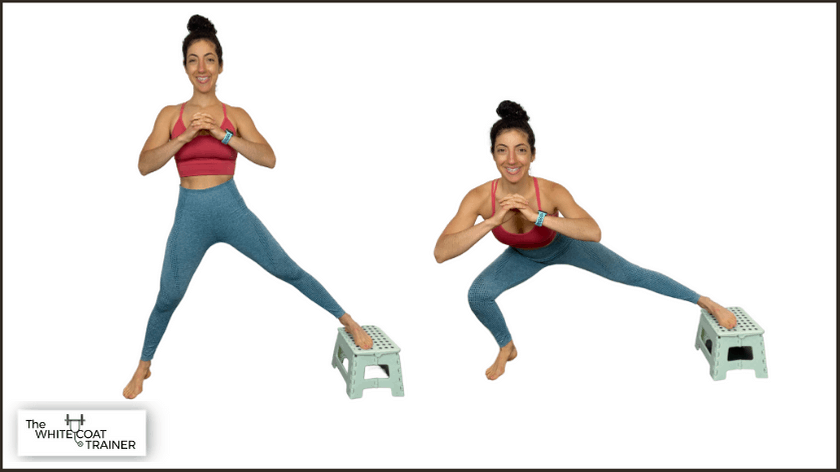
To do it:
- Stand to the side of the bench and place one foot on top of it.
- Step away enough from the bench so that you can straighten the elevated leg with the inside ankle flat on the bench.
- Keep your other foot flat on the ground pointing forward.
- Keeping your weight on the heel of the bottom foot, lunge towards that leg.
- Do your best to keep your spine neutral and your other leg straight.
- You should feel a nice stretch on the adductor of the straight leg.
Copenhagen Plank
Last but not least, we have the Copenhagen Plank or the Copenhagan Side Plank.
This exercise is a lot harder than it looks. To do it, you will need a bench or a couch to elevate your feet on.
Here’s what it looks like.

Here’s how to do it:
- Get into a side plank position perpendicular to a bench.
- Next, elevate your top leg on the bench while letting your bottom leg hover in the air right next to it.
- Focus on squeezing your legs together and you should feel your adductors activating.
You can do this exercise for time or for repetitions.
Bonus Adductor Exercise With bands
There is one other exercise that you can do which requires the use of a long closed-loop resistance band.
 Resistance Band Set
Resistance Band Set
Long closed-loop resistance band set (4-pack). These bands are lightweight, portable, and highly versatile.
It’s the standing hip adduction.
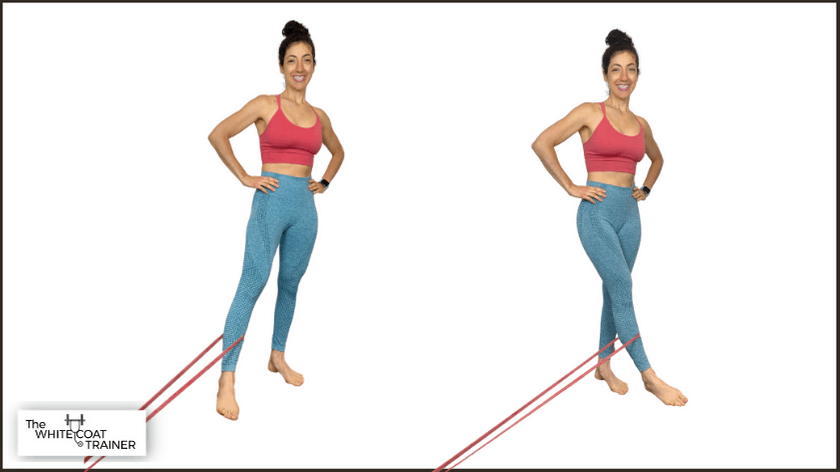
To do it:
- Loop and anchor one side of the resistance band on a sturdy structure.
- Next, place one foot inside the other loop.
- From here, stand perpendicular to the structure with your feet together.
- Begin adducting the banded leg in front of and toward your other leg.
- The range of motion won’t be very big.
- Slowly reverse back to the starting position and repeat for reps.
Okay, so there you have 7 exercises to help isolate this important muscle group!
Now let’s talk about another issue many people face.
Tight adductors!
How do you tell if you have tight adductors?
Tight adductors cause achiness in the inner thighs as well as decreased ability to open your hips.
To tell if you have tight adductors, you can do one simple test, ball squeezes.
The Side-Lying Ball Squeeze
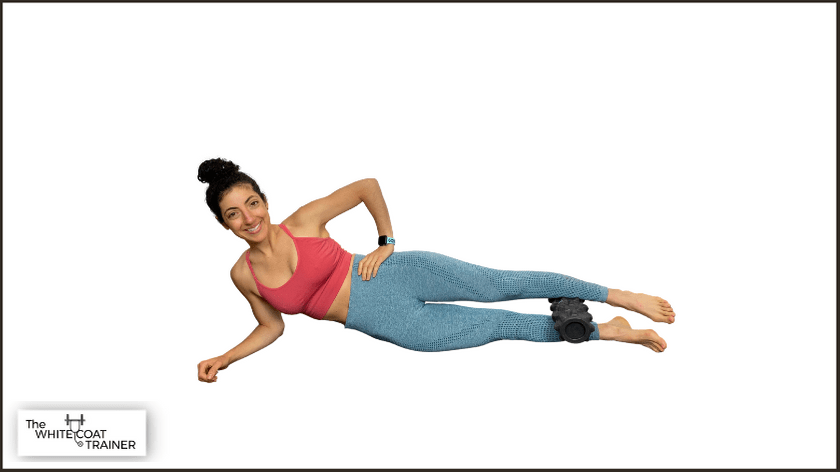
Lie on your side with your legs straight and a ball or foam roller between your feet.
Next, squeeze the ball by pressing your feet together.
Does this cause cramping, pain, or discomfort? If so, you likely have tight adductors.
What causes tight adductors?
Adductor muscles can get tight from being in short contracted positions for prolonged periods of time.
This is especially true if you:
- do a lot of squatting
- do a lot of cycling
- or sit for many hours of the day
… without doing any activities that stretch or open the groin.
How do you stretch the adductor muscles?
Here are the top three hip adductor stretches.
EASE INTO THESE EXERCISES AS YOU CAUSE AN ADDUCTOR STRAIN OR INJURY IF YOU EXCEED YOUR MOBILITY.
Quadruped Lean Back Adductor Stretch
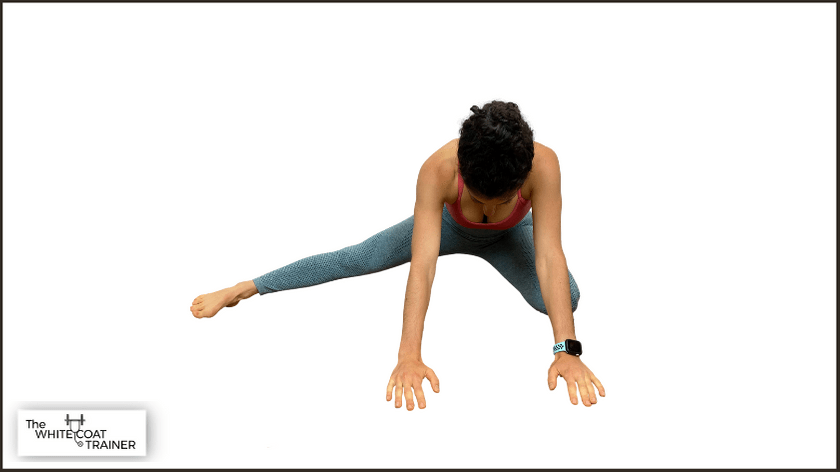
Frog Stretch
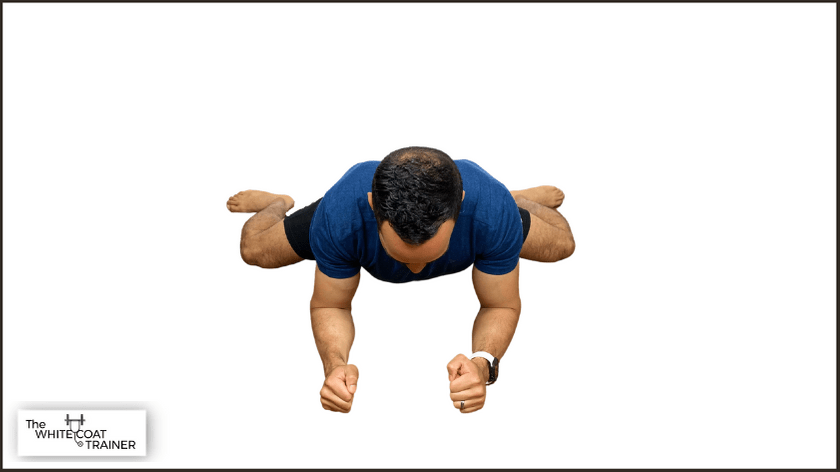
Pancake Stretch
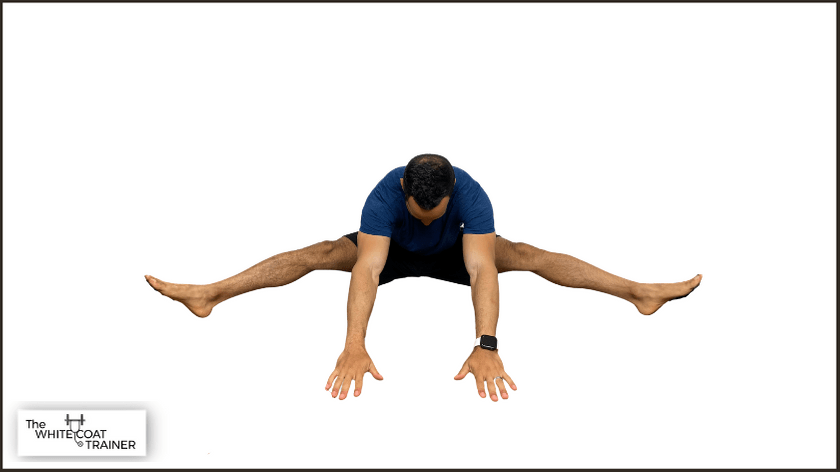
Other Related Questions
What is difference between abductor and adductor?
Adductor muscles pull your legs towards your midline while abductor muscles do the opposite – they pull your legs away from the midline of your body.
Do squats work your adductors?
The squat primarily works the adductor magnus muscle via hip extension. Greg Knuckols, a highly respected fitness enthusiast wrote an entire article with studies showing adductor muscle growth purely through squatting.
Do sumo squats work adductors?
Sumo squats work your adductors more than traditional squats due to widened stance. In addition, you can also hold a dumbbell at your chest to make the exercise more challenging.
Do lunges work adductors?
Lunges work the adductor muscles isometrically as they force you to stabilize your entire body weight on one leg.
To specifically isolate the adductor muscles you can perform lateral lunges while keeping the foot of the straight leg flat on the ground.
Do deadlifts work adductors?
Deadlifts work your adductors through hip extension, which is one of the secondary functions of the adductor muscle groups.
Do adductors flex the knee?
Yes, one of the adductor muscles, the gracilis muscle, assists in knee flexion.
Does cycling strengthen adductors?
Cycling, similar to squatting can be a good way to strengthen the adductors as your hips go into different degrees of flexion and extension.
Is the adductor exercise machine at the gym useful?
I prefer that you use free weight exercises to strengthen the adductors as this will help improve your muscle coordination and stabilization.
However, if you have access to the hip adduction machine, and you want to use it, feel free to incorporate it into your routine.
Final words on Hip Adduction Exercises
So there you have 7 exercises you can do to strengthen your inner thigh muscles.
These exercises can be done whether you want to strengthen the adductor muscles or rehab a groin strains.
Now I want to hear from you.
Which of these exercises do you want to try first?
Comment below and let us know!
Related Posts
- 3 Calisthenics Leg Workouts You Can Do Anywhere
- A Complete List of Calisthenics Exercises By Body Part
- 9 Pieces of Equipment You Should Buy For Your Home Gym

Alex Robles, MD, CPT / Brittany Robles, MD, MPH, CPT
Alex & Brittany Robles are physicians, NASM Certified Personal Trainers, and founders of The White Coat Trainer: a resource dedicated to improving the health and fitness of busy professionals using time-efficient strategies. Their advice has been featured in My Fitness Pal, Prevention, Livestrong, Reader’s Digest, Bustle, The Active Times, and more. Learn more about them here.
References:
- Delmore RJ, Laudner KG, Torry MR. Adductor longus activation during common hip exercises. J Sport Rehabil. 2014 May;23(2):79-87. doi: 10.1123/jsr.2012-0046. Epub 2013 Aug 12. PMID: 23945760.
